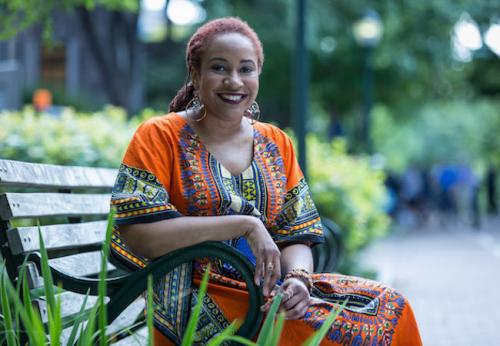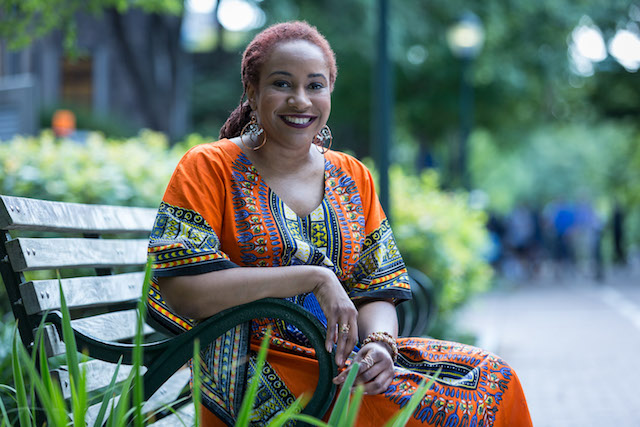
https://www.gse.upenn.edu/news/ebony-elizabeth-thomas-diverse-books-chil...
What children read shapes what they think of themselves, of others, and of the world. The world is diverse, but children’s literature doesn’t always truly reflect that.
“The ways in which we are misrepresented, are marginalized, or deleted vary according to our identities,” Penn GSE expert on children’s literature Ebony Elizabeth Thomas says, “but all youth-focused narratives that enter popular culture should be more representative. It's not just kids of color, kids from the margins who need diverse literature and media. It's all kids who need all stories about all kinds of people.”

Thomas recently spoke with Vulture about the long-standing history of misrepresentation, specifically in the fantasy genre of children’s literature. She said that some of the stereotypical representation of race and ethnicity in contemporary fantasy can be traced back to the canon literature. “This fear and this hatred of the dark other is so deeply inscribed in the European imagination,” Thomas explained to Vulture.
Thomas is an assistant professor in Penn GSE’s Literacy, Culture, and International Education Division. We sat down with her to further discuss the influence of personal identities in writing, the connection between racial/ethnic representation and children’s thought process of race/ethnicity, and how teachers and parents can guide children to read books that are diverse and real.
Q: In your interview with Lila Shapiro from Vulture, you mentioned that writers are going to “leave fingerprints” on their characters whether they intend to or not. How should a writer draw the line between referencing one’s own race/ethnicity and still be relatively “raceless?”
A: I don't know that “racelessness” is something that we want to strive for or that we can strive for. We have different perspectives for every object in the world because we sit in different positionalities. Our identities and our positionalities, all of our prior lived experiences, as well as our experience of the world mean that everyone sees the world from their own perspectives. So, we do leave a trace of our fingerprints on the characters when we write about humans.
It's not just about protagonists. It's also about secondary characters. Unless everybody in your story is from the same culture, they are going to encounter the Other eventually. How you write that Other is going to depend on your perspective, and how you have experienced the others. We can't escape race, but we can do better at representing each other humanely in our stories.
Q: What about characters that are not human? How do the authors’ fingerprints affect those characters?
A: They are absolutely affected. I get this question a lot about the animals, the inanimate objects, the aliens, and the fairies that we write. Are they raced? Absolutely. As a matter of fact, not only are they raced in interesting ways, they are also anthropomorphized in a way that will absolutely be influenced by the ways in which we see ourselves, not only as part of race or culture, but also the ways in which we see ourselves as human. I love Star Trek. All of those aliens are eerily human, bipedal, and traveling around the milky way galaxy with two eyes, funny looking ears, and wrinkly foreheads. That is because human storytelling is a commentary on what it means to be human. So absolutely you leave the oil or the dust of your fingerprints in whatever you write, because it is an expression of you.
Q: How do these fingerprints in children's literature influence children's thought processes of race?
A: We need more empirical studies of this. Right now, we have anecdotal evidence. There’s the doll test, a famous psychological experiment where children of all races, but particularly Black children, were shown to prefer White dolls over Black dolls or dolls of the same race even in earliest childhood because of what they have been picking up from the culture about Blackness, darkness, or dark skin.
Similarly, many teachers have anecdotal evidence that after a while, Black children begin to dislike just reading Black books. I have a student collecting data for me at a high school here in Philadelphia. I am having the hardest time getting the high school students to read a Black historical book. They even chose to read the Handmaid's Tale over Octavia Butler's Kindred. I think some of that is internalized White supremacy and anti-Blackness. But some of it is just fatigue around Black pain, specifically for Black children.
Some of my friends who work in Asian American and Asian diaspora children's literature also report startling statistics that most Asian American children and young adult authors do not write Asian, Asian American, or Asian diaspora characters. Often their protagonists are White.
Q: What can teachers do to help children of color to get away from the fatigue around the history of pain?
A: Kids need a balance of stories, although we don't have many stories that are not about Black pain. The only way you get away with it is if you remove other options from the reader or the viewer, which is what happened in the Black Panther. When the mainstream audiences don't have the alternatives, either they could reject the entire narrative of Black Panther, or they would have to view it and identify the Black characters. We need that kind of things for kids of color and kids who are marginalized in other ways, such as kids with disabilities, and LGBTQ and trans kids, who unfortunately have an astronomical suicide rate.
The books about slavery, gang members, or somebody on drugs –– there's really no relief from those kinds of narratives, while other kinds of literature are riven with stereotypes. For example, my friend who focuses on Asian and Asian American children's literature talks about how inappropriate a lot of that literature is, where you have a grandma walking on the street wearing a traditional dress that she would never wear in that context. It's meant to set up people of Asia as always alien, and those are subtle messages pounding a kid's mind and imagination and shaping their consciousness. By the time I am in middle school, I might not want to read books about people like me either.
Q: What about parents? What should parents do? What resources are available to help parents pick more diverse books?
A: I think it's important for parents to become more aware of the importance and influence of racial representation in literature. We can build this awareness by teaching them different things in the first place, by introducing these tough topics to them in different ways, by having a variety of literature, media, and video games where some race/ethnicity are not always the center of the narrative. If they get that narratives can be about different people when they are very young, when they are older, maybe they won't react so harshly to de-centering.
Every year, for Penn GSE’s Educator’s Playbook, I pick a list of best children’s books. The website We Need Diverse Books is a good one. Lee & Low Books has a lot of great resources. There is also Teaching for Change and Teaching Tolerance.
Q: What else do you think should be done?
A: I think that movies like Black Panther are incredibly important, because this movie entered into the public consciousness and it is a new way of seeing Blackness. Imagine, if Marvel had chosen not to whitewash several of its properties and actually cast well-deserving Asian American actors in roles for Doctor Strange and Iron Fist, we could be having a similar conversation with Asian American parents. We have to speak out whenever a text is whitewashed, because we are always going to have White protagonists that aren't going anywhere and we need more diversity.










Add new comment